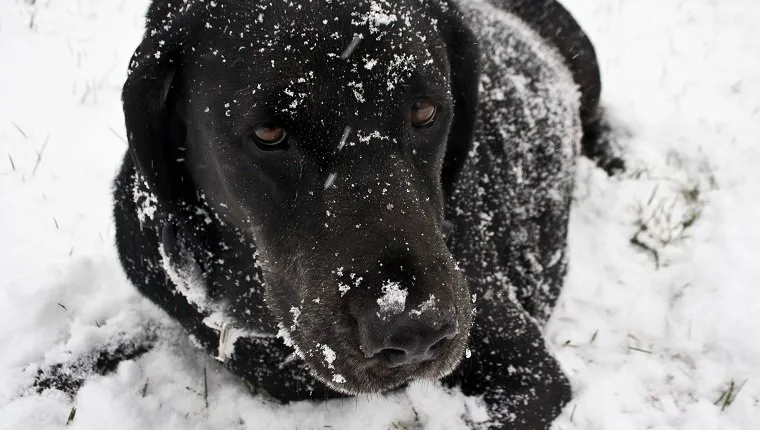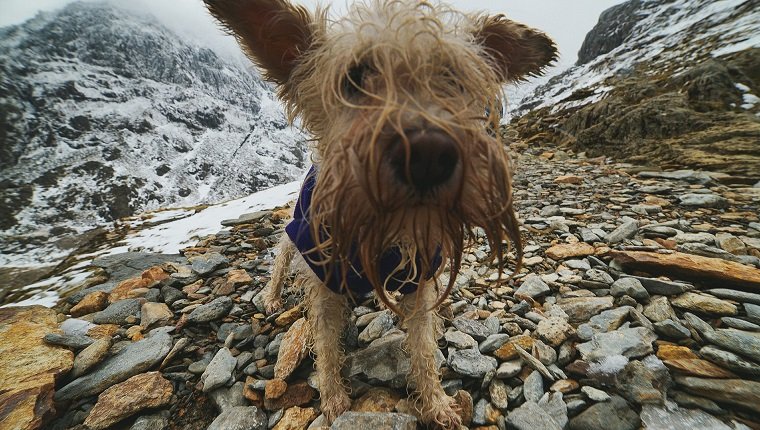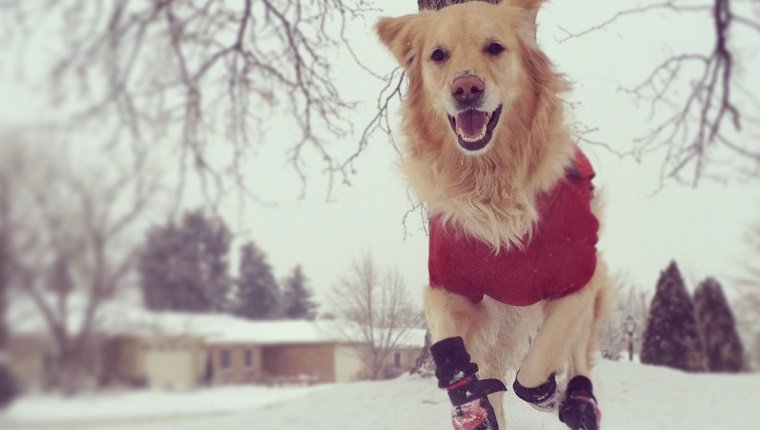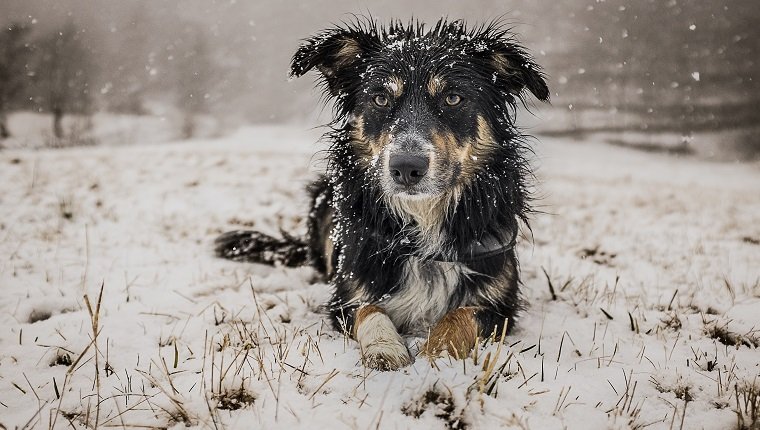Hypothermia in dogs is an extreme lowering of the body temperature. It happens when pets suffer exposure to frigid temperatures for too long, or if they have wet fur in cold, windy environments.
When the body temperature drops, heart rate and breathing slow down, which can lead to several problems. The consequences of sustained, severe hypothermia may include neurological problems (including coma), heart problems, kidney failure, slow or no breathing, frostbite, and eventually death.
During a cold snap a few years ago, a woman from Chicago left her dog in his doghouse for twelve hours. Temperatures fell as low as minus 15 Fahrenheit. Sadly, the dog died from hypothermia. Police arrested the woman after they received a tip and charged her with animal cruelty.
A horrific story, no doubt, and one that shouldn’t have happened. Sadly, many dogs die in the same way every year. It shows just how serious and deadly this condition can be, and why we must always bring dogs in from the cold and report any signs of neglect, especially in winter months.
If you see the signs of hypothermia in your dog, take steps to keep them warm. Call your veterinarian immediately for treatment. Here’s what you need to know about the symptoms, causes, and treatments for hypothermia (low body temperature) and how to prevent it from ever happening to your beloved, furry friends.
Symptoms Of Hypothermia In Dogs

Symptoms of hypothermia in dogs get more severe as the body reacts to a decrease in temperature and, eventually, shuts down.
Although hypothermia is not commonly seen in her practice, Jenna Armstrong, DVM, at Ark Animal Hospital in Chalfont, PA, says when it does happen, it tends to be because pet parents fail to recognize the early signs. It also happens when people mistakenly leave pets outside overnight.
If you notice the following signs in your dog, keep them warm and get to an emergency vet for treatment:
- Strong shivering and trembling followed by no shivering
- Acting sleepy or lethargic and weak
- Fur and skin are cold to the touch
- Body temperature is below 95 degrees (Fahrenheit)
- Decreased heart rate
- Dilated pupils (the black inner circle of the eye appears larger)
- Gums and inner eyelids are pale or blue
- Trouble walking
- Trouble breathing
- Stupor, unconsciousness, or coma
Causes Of Hypothermia In Dogs

Hypothermia in dogs is often caused by overexposure to frigid temperatures without a way to stay warm. However, it can happen to dogs at normal temperatures, especially if they are very old or young or under anesthesia.
Dogs who suffer from diseases of the hypothalamus, including hypothyroidism, are also at risk.
Here are some other potential causes of hypothermia in dogs:
- Wet fur or skin
- Being in cold water for a long period of time
- Shock
Treatment For Hypothermia In Dogs

Treatment for hypothermia in dogs should begin immediately, as it can quickly become a life-threatening emergency.
If you suspect your pet has hypothermia, take the following steps:
- Remove your pet from the cold and put them in a warm room.
- Dry off your pet thoroughly either with towels or a hair dryer set on low and held about twelve inches away.
- Wrap your pet in a blanket. Warm it in the clothes dryer first.
- Wrap warm hot-water bottles in towels (to prevent burning your pet) and place on pet’s abdomen.
- Heating pads can be used if your dog is dry, but supervise them so they don’t chew at the cords.
- Allow your dog to drink warm fluids.
- Check the pet’s temperature with a thermometer. If it’s below 95 degrees, the pet could be at risk for hypothermia. Take them to a vet immediately.
If their temperature is above 95 degrees Fahrenheit, retake their temperature every ten to 15 minutes to see how severe the hypothermia is while doing the warming techniques. Once their temperature is 100 degrees or higher, you can remove the hot-water bottle, but be sure to keep them warm.
Get your dog checked by a veterinarian the same day, even when their temperature reaches 99 degrees or higher because one incidence of hypothermia can be harmful and make them prone to it again.
If your pet doesn’t respond to warming up their body within 30 to 45 minutes, go to straight to emergency vet clinic.
Prevention Of Hypothermia In Dogs

Hypothermia can be prevented by not allowing your dog outside for too long in very cold weather or near frigid water.
Be aware of how well your pet tolerates the cold as very young pets, very old pets, small dogs, and those with short hair can be most susceptible to hypothermia. If that describes your dog, consider equipping your pup with dog sweater or jacket with booties to protect their feet for outings.
“Cooking spray can also be applied to their paws to prevent snowball accumulation and cold feet,” Dr. Armstrong says. There are several products like paw wax that can be used to protect a dog’s feet in winter for those who refuse to wear booties, as well.
Above all, use common sense. If it’s too cold for you to venture outside — even while bundled up — chances are the same goes for your dog.
Do you take steps to prevent hypothermia in your dog? How do you make sure your pup stays safe and warm in winter? Let us know in the comments below!
Christine McLaughlin is a Pet First Aid expert and a freelance writer, editor, and author.









